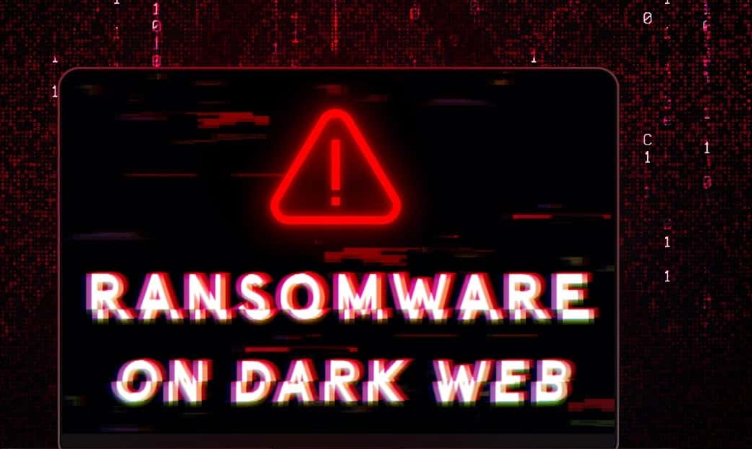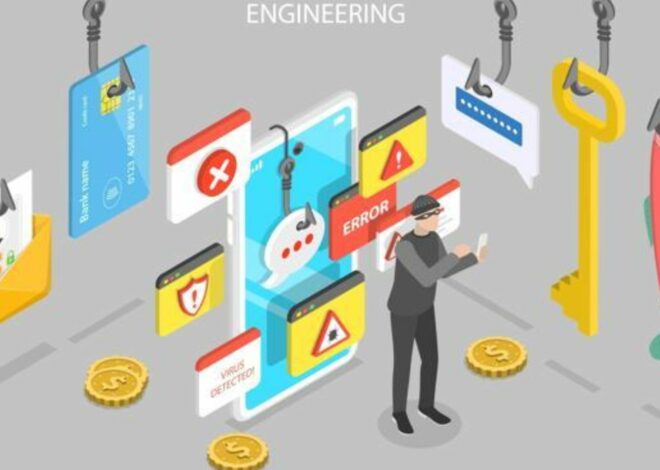
The Dark Web’s Role in Ransomware
The world of cybercrime is as complex and murky as the darkest corners of the internet itself. In recent years, one term has dominated the headlines and sent shivers down the spines of individuals and organizations alike: ransomware. This insidious form of malware encrypts your files, holding them hostage until a ransom is paid. But have you ever wondered who’s behind these attacks? It’s time to delve into the shadows and explore the deep, dark web connections of ransomware perpetrators.

A Glimpse Into the Dark Web
The dark web, an enigmatic part of the internet, operates beyond the reach of search engines. Accessible only through specialized browsers, it hosts a myriad of hidden websites, marketplaces, and forums. This realm provides cybercriminals with the perfect cover to conduct their illicit activities.
The Marketplace of Malice
When exploring the dark web’s connection to ransomware, one quickly encounters underground marketplaces. These platforms operate much like legitimate e-commerce websites but cater exclusively to cybercriminals. Here, a sinister digital economy thrives.
Market Dynamics
Underground marketplaces facilitate the buying and selling of malicious software, tools, and services. Offerings range from exploit kits and hacking tools to ready-to-deploy ransomware variants. For instance, a novice cybercriminal can purchase a ransomware-as-a-service (RaaS) package that includes malicious software, a user-friendly dashboard, and even customer support.
Pricing and Quality
One striking aspect is the competitive pricing and quality assurance within these marketplaces. Prices for ransomware variants vary widely, depending on factors like complexity, the level of encryption, and potential impact. Buyers can even read reviews and ratings, ensuring they get their money’s worth.
Escrow Systems
To establish trust within this shady marketplace, some platforms offer escrow services. When a buyer initiates a transaction, the payment is held in escrow until the purchased goods or services are delivered, minimizing the risk of scams.
Ransomware Negotiators and Brokers
In addition to exploring the dark web’s role in the creation and distribution of ransomware, it’s essential to shed light on the intermediaries—ransomware negotiators and brokers—who play a pivotal role in ransomware attacks.
Negotiation Process
In the aftermath of a ransomware attack, especially those targeting large organizations, negotiation with cybercriminals becomes a delicate process. Ransomware negotiators bridge the gap between the victim and the hacker, facilitating communication and ensuring that the ransom is paid in exchange for the decryption key.
The Controversy
The role of ransomware negotiators is controversial. While they can help victims recover their data and potentially reduce the ransom amount, critics argue that they indirectly support the ransomware economy by facilitating payments.
The Broker’s Dilemma
Apart from negotiators, there are individuals who actively broker ransomware deals. They scout for potential victims, initiate attacks, and demand ransoms on behalf of cybercriminals, further complicating the ransomware landscape.
The Dark Web’s Best-Kept Secrets
Delving deeper, we uncover notorious ransomware groups and individuals responsible for high-profile attacks that have shaken the digital world.
REvil (Sodinokibi)
REvil is one of the most prominent ransomware-as-a-service groups, infamous for its high-profile attacks on corporations and government entities. They are known for their “double extortion” technique, where they not only encrypt the victim’s data but also exfiltrate sensitive information, threatening to release it unless the ransom is paid.
DarkSide
DarkSide garnered global attention following the Colonial Pipeline attack in May 2021, which led to fuel shortages and panic buying in the United States. After the attack, the group mysteriously vanished from the dark web, leaving many questions unanswered.
Ryuk
Ryuk is a strain of ransomware that has been active since 2018. It is often associated with the North Korean Lazarus Group and targets high-value entities such as large enterprises and healthcare organizations, demanding hefty ransoms.
Law Enforcement and the Dark Web
As ransomware attacks continue to escalate, law enforcement agencies worldwide are intensifying their efforts to unmask and apprehend cybercriminals operating within the dark web.
Global Cooperation
To combat the international nature of ransomware attacks, law enforcement agencies from different countries are increasingly collaborating. Joint task forces and cross-border investigations are becoming more common as cybercriminals operate across jurisdictions.
Challenges in Attribution
One of the primary challenges faced by law enforcement is attributing ransomware attacks to specific individuals or groups. Cybercriminals often use techniques to obfuscate their identities, making it difficult to trace them back to their real-world locations.
Cryptocurrency Tracing
While cryptocurrencies provide a degree of anonymity, they are not entirely untraceable. Some law enforcement agencies have developed the capability to trace cryptocurrency transactions, potentially leading them to the cybercriminals behind ransomware attacks.


